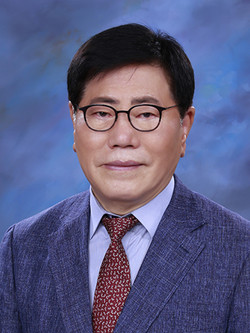New Year remarks Chief Abbot Hongpa of Myogak-sa Buddhist Temple in Seoul
The following are remarks by Chief Abbot Ven. Hongpa of the Korean Buddhist Gwaneum Order at the Myogak-sa Buddhist Temple in Seoul made at a recent interview with The Korea Post media, publisher of 3 English and 2 Korean-language news publications since 1985.—Ed.

Remarks by Chief Abbot Ven. Hongpa:
I wish everyone peace and safety at home.
Last year was a difficult year for all people in the global village throughout the year due to the invisible Corona 19 virus.
Through these chaotic times, we must wear the armor of humility and overcome through meditation and prayer.
It is important to believe that Buddha is the benevolent father of sentient beings and to have a mind that can overcome any difficulties.
We must overcome this chaotic time through meditation and prayer. This is the Buddha's teaching.
In the New Year, the Year of the Tiger, I hope that all of our families will be filled with peace and joy through the deep and broad mercy of the Buddha.
I welcome the New Year of the Year of the Tiger, the year of Buddhist Calendar 2566 (2022), and give the blessings and good luck to all the people in the world.
“Go Bul Dang Heng” in Chinese character is a phrase that Ven. Hongpa often uses when presenting a book to his Buddhist followers, and it means “going with the old Buddha”.
In other words, the Buddha has the meaning that he will always be with you in the past, present, and future in order to profitably guide sentient beings and lead them to enlightenment.
By doing this, sentient beings are filled with joy for a long time, like a gentle breeze blowing gently, so that all things will come true as intended, and that all things may bring joy and lively joy. (Cheon Pung Jang Rak in Chinese character)
Even in the New Year of the Year of the Tiger, the Buddha is always with you, so I pray that if you trust and rely on the Buddha, you will be blessed with immeasurable blessings.
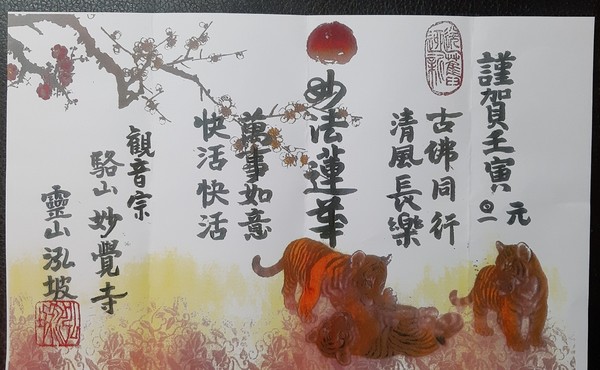
Author’s activities:
One year ago (November 2020), I (Chief Abbot Ven. Hongpa) published a translation of the Myobeop Yeonhwagyeong, which is considered one of the three major sutras along with the Geumganggyeong and the Hwaeomgyeong.
The Myobeop Yeonhwagyeong is the representative sutra of Mahayana Buddhism, and after two years of translation work, it was published in 1,200 pages.
The Lotus Sutra is a compass of the Tripitaka Koreana and a sutra that reveals the true Buddha’s spirit. You can feel the essence of it.
The Lotus Sutra of Myobeop Yeonhwagyeong tries to show a new perspective by referencing all of the Lotus Sutra explanations, side editions, and Chinese and Japanese Lotus Sutras from ancient scholar Wonhyo of Silla to Kim Si-seop of the Joseon Dynasty. It is said that he planned to donate the book to Japanese Buddhism as the translation contained a Japanese preface.
According to the 'Sinpyeonje Religious Confession General Record ' published by Buddhist Monk Uicheon (1055-1101) of Daegakguksa, research has been active since the Silla era, and several research commentaries have been published.
More than 110 papers were published not only during the Goryeo Dynasty, when the Buddhist policy was implemented, but also during the Joseon Dynasty, when Buddhism was rejected.
The Myobeop Yeonhwagyeong Lotus Sutra is the most widely published Buddhist sutra transmitted to Korea.
The reason why ‘Myobeop Yeonhwagyeong’ was published so frequently is because it is the most important scripture among the Mahayana Sutras.
I serve as the vice president of the Buddhist Cultural Exchange Council, recently re-produced in Japanese and sent a large quantity of a book, entitled “To You, Who Has A Hard Morning,” published two years ago, to Japan.
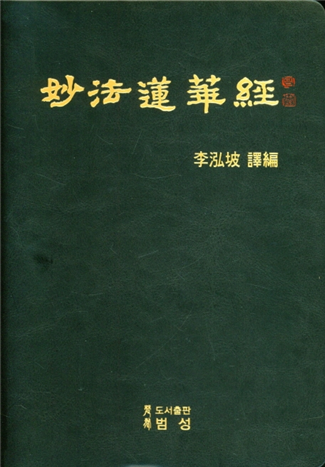
This book is a compilation of phone calls to comfort Buddhists. With the thought of giving hope and courage to modern people who are tired of their arduous daily life, and helping them to start their day with hope through the teachings of the Buddha, since March 2017, they have been practicing Buddhism through a one-minute speech under the name of 'Morning Haewooso.' And I told stories that solved the troubles of the citizens.
These stories are gathered together and published with the subtitle 'Short Letter from Chief Abbot Ven. Hongpa.' In this book, you can learn to accept 'me' and 'other' as they are, and learn how to affirm your life and teachings can be found.
Since 2017, I have been sending 1-minute voice messages to Buddhists every morning three times a week. It is called ‘Morning Haewooso’. Modern people worry too much.
It means, “Pour it out and start the day.” Whether it was okay or not, there were a lot of requests to compile it into a book. I calmly explained the background to the publication of this book.
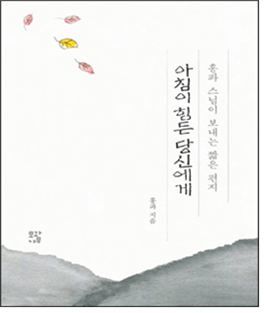
Actively promoting exchanges with the Japanese Buddhist community:
I (Chief Abbot Ven. Hongpa) have been interacting with the Japanese Buddhist community for 38 years this year, including serving as the secretary-general of the Korean Association of Buddhist Religions for 31 years.
Through this, a memorial service was held for the victims of the Chosei coal mine submergence during the Japanese colonial period.
In this regard, I emphasized that "the only way to listen to the voice of conscience and act according to it is to contribute to the promotion of friendship between Korea and Japan and to save mankind from living beings."
I am also serving as a representative of the Remains Return Committee of Conscripted Victims during the Japanese colonial period. Regarding this, we say “It has been over 20 years, and we have had more than 1,000 remains.”
There are still about 100,000 remains scattered in Japan, and public support is desperately needed, but the government keeps clinging to forms and procedures.
Relations between Korea and Japan are very complicated, and if you pursue only a cause, you lose the point.
If you trust and support a private organization with trust and know-how, you will be able to achieve greater results.”
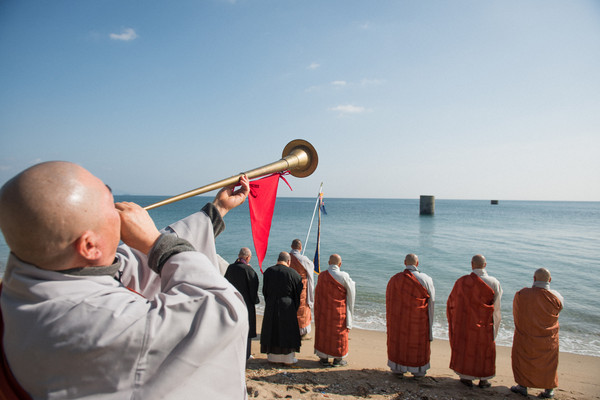
“Reflection is the beginning of forgiveness.”
“Forgiveness is the beginning of reconciliation.”
“Reconciliation is the beginning of peace.”
In commemoration of the 50th anniversary of the founding of the Gwaneum Order, on October 7 the same year Chief Abbot Ven. Hongpa announced the sacrifice of forced labor during a certain period of occupation and the project of returning the country to the spirits without any connection, and sealed the memorial service on February 18, 2017.
Since then, every year, at the site of the accident, about 200 people, including myself, and the bereaved citizens of the consulate general in Hiroshima, have taken part and sealed the memorial service.

Myogaksa Temple of the Gwaneum Order of Korean Buddhism:
Myogaksa Temple is a Korean Buddhist temple located in the heart of Seoul, the Republic of Korea. It is nestled on the east side of Naksan Mountain. Myogaksa Temple is home to the administrative headquarters of the Korean Buddhist Gwaneum Order. It was founded in May 1942.
It is said that the temple was built in May 1942 by Buddhist Monk Taeheo Hongseon according to the Fengshui Theory that it would be comfortable for Seoul citizens to build a temple here.
Naksan, where Gwaneum Temple is actually located, is a mountain that corresponds to Seoul’s left blue dragon in the Fengshui Theory, and Myogak Temple is located at the end of it.
Despite its relatively short history, Myogaksa, located in the central area of Seoul, is serving as a safe haven for Seoul citizens outside the East Gate (Dongdaemun).
The temple, which was burnt down in a fire in February 1997, was largely restored after 7 years to achieve the present status. Naksan, where Myogaksa Temple is located, corresponds to the topography known as Blue Dragon to the left of Seoul based on geographical principles, and Myogaksa Temple stands tall at the foot of the mountain.
Myogaksa Temple is also famous as a temple-stay temple for foreigners. It has been designated as a temple-stay temple since the 2002 World Cup, when temple-stay was first started, and it is also the temple with the longest tradition.
It is so well known that it is competing for first or second place in the country, with more than 3,000 foreign participants every year.
A few years ago, a captain of French airlines came frequently.
Recently, he brought his daughter with him.
When you come here, you feel at ease. That's basic. We keep only one temple.
Take a guest as a friend. Relationship does not have high or low levels.
On December 22, the Korean Buddhist Gwaneum Order held a red bean porridge sharing event at the Gwaneum Temple in Jongno in Seoul, the headquarters of the Temple, where 1,500 servings of red bean porridge were packaged and distributed to the citizens.
The peculiarity of this event is that due to the impact of COVID-19, the event was also held in a drive-thru manner to prevent the spread of the virus.
And we added meaning by using eco-friendly containers made from sugar cane.
On the winter solstice day when the new year comes to an end and the New Year’s spirit comes in, we prepared this year to eat red bean porridge for the people and residents who are very tired and weary. Integrity said so.
Feeling the seriousness of the spread of the coronavirus, the Buddhist community is also actively seeking climate action.
The Gwaneum Order Welfare Foundation held a Gimjang (Winter kimchi) Sharing for Winter event for residents in Sungin-dong, Jongno-gu, Seoul this afternoon, and practiced love for neighbors by making 1,500 kilograms of kimchi.
